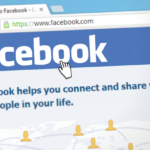Sometimes, connecting with your audience can be tricky. Even if you do everything you’re supposed to do – send out surveys, research keywords, read comments and feedback, and study your competitors – it’s still hard to reach that point where you know what your audience is going to do before they know.
And that’s a problem, because one of the first things you learn when you study marketing is that knowing and connecting with your audience is step number one. It’s the fundamental basis from which all other tactics, strategies and executions flow from.
Without it, you’re just throwing mud at the wall and hoping something sticks.
Except it’s not mud you’re feverishly packing into your hands and recklessly hurling without regard – it’s your company’s time, money and energy. It’s your hopes and dreams.
It’s your future.
So how do we connect with our audience? How do we use our learnings from all those surveys and all that feedback? What is the competition doing differently? How do we get our audience to view us as an old, trustworthy friend instead of a faceless, self-interested corporation?
How to build a connection with your audience through “mirroring”
A recent global online survey by Nielsen shows the tangible and direct power of audience connection through “mirroring” – demonstrating identical values, behaviours and ideas to a prospect.
The results show that consumers willing to pay higher prices placed more value on their chosen brand’s beliefs and actions than their deals or offerings.
As quoted directly from Nielsen’s page, “For this group, personal values are more important than personal benefits, such as cost or convenience.”
Car salespeople use this technique to great effect, and have for generations. They’re taught to “mirror” their prospect by copying their body language, mannerisms and language. Whenever the prospect mentions a city or hobby he or she likes, the salesperson miraculously likes the same thing.
The most important thing to consider when you put “mirroring” to work for YOU
If your audience is going to feel truly connected to you, completely behind you and even madly defensive of you, you need to show that you’re on their team. Human beings are tribe-oriented by nature. It’s in our DNA, and it’s not going anywhere soon.
If you’re going to show that your brand represents your audience’s beliefs, opinions and ideas – you better be willing to take strong stances (even on controversial issues).
Does that mean you might repel people who disagree with the implied (or overt) values of your company? Definitely, but the key thing to remember is those people wouldn’t have been good customers anyway! Quality beats quantity in this case, meaning it’s better to have 1,000 loyal advocates as an audience than 10,000 bargain seekers who’ll jump ship to another brand as soon as they can offer a lower price than you.
Take care of your audience like you’d take care of your spouse – care for them and back them up unapologetically.
Don’t be an “okay” solution for lots of people, be the “very best” solution for your audience. Be their ONLY choice.




